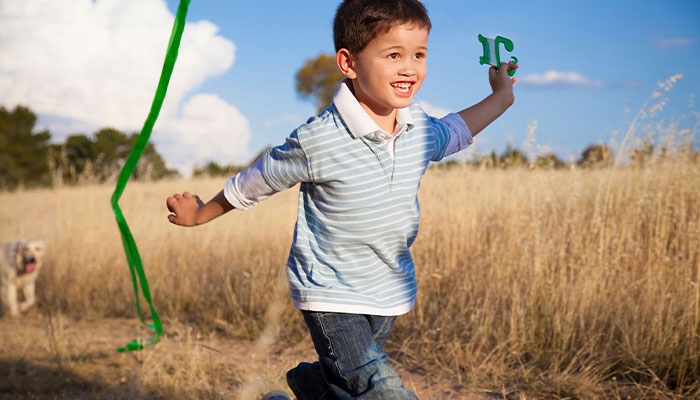While we believe that the books and resources recommended may be of value to you, keep in mind that these are suggestions only and you must do your own due diligence to determine whether the materials are appropriate and suitable for your use. PNC has no sponsorship or endorsement agreement with the authors or publishers of the materials listed.
OUR SKY

Let’s Go Fly a Kite
Children will investigate things in the sky, and make kites.

Lesson Objective
Children will investigate things that fly in the sky and explore how kites fly.
Science
What You'll Need
- Paper bags – 1 per child
- Paper strips or streamers – several per child
- Hole punch
- Glue – 1 bottle per table
- Tape
- Lightweight string – two 3-foot lengths per child
- Watercolor paint/crayons/markers (to decorate the kites)
What To Do
- Discuss the things we see flying in the sky (see Guiding Student Inquiry and Did You Know?).
- Encourage the children to think about what is in the sky that allows things to fly (air and wind).
- Tell the children they are going to make kites and try to fly them.
- Distribute paper bags, paint, crayons, or markers, and have the children decorate their bags.
- Help the children to glue streamers on the end of the paper bag that is closed.
- Place a piece of tape on each corner of the open end of the bag, and punch a hole through the tape.
- Tie two pieces of string between the holes to create handles.
- Take the children outside to try flying their kites.
- Upon returning to the classroom, discuss trying to fly the kites (see Guiding Student Inquiry).
Resources
Home School Resources
Home educators: use these printable lesson PDFs to teach this lesson to your home schoolers. They're available in English and Spanish.
Content Provided By
Common Core State Standards Initiative – These lessons are aligned with the Common Core State Standards ("CCSS"). The CCSS provide a consistent, clear understanding of the concepts and skills children are expected to learn and guide teachers to provide their students with opportunities to gain these important skills and foundational knowledge [1]. Visit the CCSS



